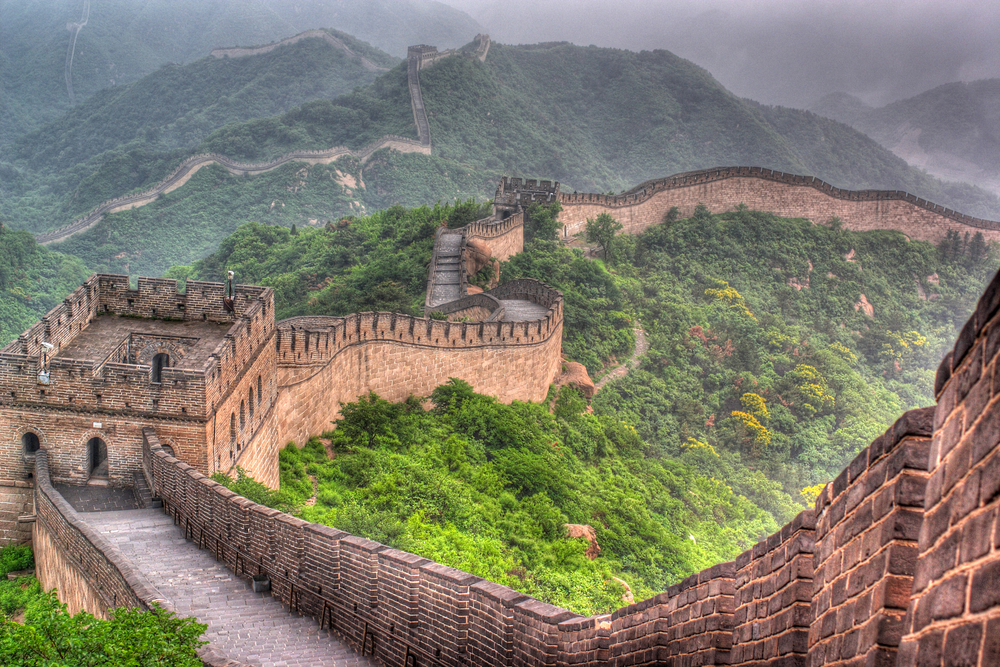
First rule: There are no rules. These resources are completely free and at your disposal. Use as much, or as little, as you want. Study casually, or work to create a portfolio of academic work that will blow the socks off of the educational establishment.
Feel free to adapt the materials for your own purposes. We expect families, business people, backpackers, college students, high school kids, middle aged vacationers, and retirees who are on a late life adventure to take these materials and run with them. We’d be very happy for teachers or travel group leaders to add these materials to their study abroad packets as well.
The nature of open source is collaboration, so please feel free to contribute when you become aware of resources we haven’t listed, or you have project ideas that we haven’t developed. Send us your work and inspire others to reach higher and deeper as they travel!
Our goal with this project is to inspire adventure and further education through experiential learning around the world. Please send us a note and let us know how you used these resources!
Buffet Style Learning
Does the menu look overwhelming? Looking for a formula to use as a skeleton for your studies in China?
Choose:
- Two books
- Two films
- Three articles
- One Problem & Solution or Project Option
- One Cultural Assignment
Table of Contents
- Books
- Books for Kids
- Films
- Articles
- Project Options
- Problems & Solutions
- Cultural Assignments
- Create Your Own Coursework
Book Recommendations
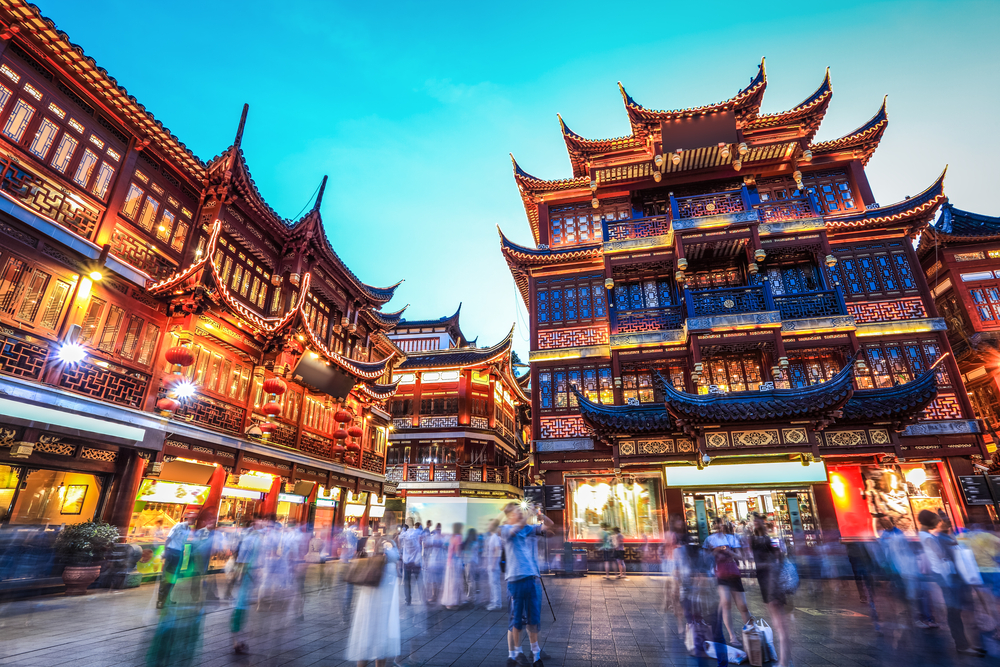
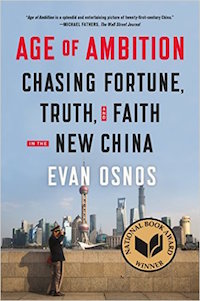 Age of Ambition: Chasing Fortune, Truth, and Faith in the New China
Age of Ambition: Chasing Fortune, Truth, and Faith in the New China
by Evan Osnos
From abroad, we often see China as a caricature: a nation of pragmatic plutocrats and ruthlessly dedicated students destined to rule the global economy-or an addled Goliath, riddled with corruption and on the edge of stagnation. What we don’t see is how both powerful and ordinary people are remaking their lives as their country dramatically changes.
As the Beijing correspondent for The New Yorker, Evan Osnos was on the ground in China for years, witness to profound political, economic, and cultural upheaval. In Age of Ambition, he describes the greatest collision taking place in that country: the clash between the rise of the individual and the Communist Party’s struggle to retain control. He asks probing questions: Why does a government with more success lifting people from poverty than any civilization in history choose to put strict restraints on freedom of expression? Why do millions of young Chinese professionals-fluent in English and devoted to Western pop culture-consider themselves “angry youth,” dedicated to resisting the West’s influence? How are Chinese from all strata finding meaning after two decades of the relentless pursuit of wealth?
Writing with great narrative verve and a keen sense of irony, Osnos follows the moving stories of everyday people and reveals life in the new China to be a battleground between aspiration and authoritarianism, in which only one can prevail.
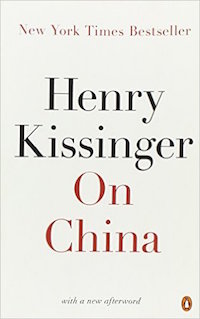 On China
On China
by Henry Kissinger
In this sweeping and insightful history, Henry Kissinger turns for the first time at book length to a country he has known intimately for decades and whose modern relations with the West he helped shape. On China illuminates the inner workings of Chinese diplomacy during such pivotal events as the initial encounters between China and tight line modern European powers, the formation and breakdown of the Sino-Soviet alliance, the Korean War, and Richard Nixon’s historic trip to Beijing.
With a new final chapter on the emerging superpower’s twenty-first-century role in global politics and economics, On China provides historical perspective on Chinese foreign affairs from one of the premier statesmen of our time.
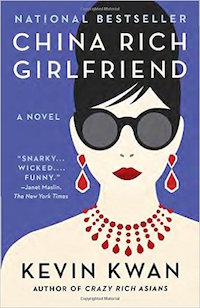 China Rich Girlfriend – A Novel
China Rich Girlfriend – A Novel
by Kevin Kwan
It’s the eve of Rachel Chu’s wedding, and she should be over the moon. She has a flawless Asscher-cut diamond, a wedding dress she loves, and a fiancé willing to thwart his meddling relatives and give up one of the biggest fortunes in Asia in order to marry her. Still, Rachel mourns the fact that her birthfather, a man she never knew, won’t be there to walk her down the aisle.
Then a chance accident reveals his identity. Suddenly, Rachel is drawn into a dizzying world of Shanghai splendor, a world where people attend church in a penthouse, where exotic cars race down the boulevard, and where people aren’t just crazy rich … they’re China rich.
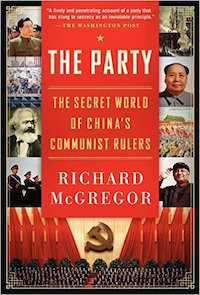 The Party: The Secret World of China’s Communist Rulers
The Party: The Secret World of China’s Communist Rulers
by Richard McGregor
“Few outsiders have any realistic sense of the innards, motives, rivalries, and fears of the Chinese Communist leadership. But we all know much more than before, thanks to Richard McGregor’s illuminating and richly-textured look at the people in charge of China’s political machinery…. Invaluable.” — James Fallows, National Correspondent for The Atlantic
The Party is Financial Times reporter Richard McGregor’s eye-opening investigation into China’s Communist Party, and the integral role it has played in the country’s rise as a global superpower and rival to the United States. Many books have examined China’s economic rise, human rights record, turbulent history, and relations with the U.S.; none until now, however, have tackled the issue central to understanding all of these issues: how the ruling communist government works. The Party delves deeply into China’s secretive political machine.
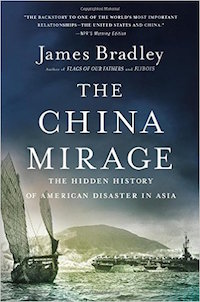 The China Mirage: The Hidden History of American Disaster in Asia
The China Mirage: The Hidden History of American Disaster in Asia
by James Bradley
James Bradley introduces us to the prominent Americans–including FDR’s grandfather, Warren Delano–who in the 1800s made their fortunes in the China opium trade. Meanwhile, American missionaries sought a myth: noble Chinese peasants eager to Westernize.
The media propagated this mirage, and FDR believed that supporting Chiang Kai-shek would make China America’s best friend in Asia. But Chiang was on his way out and when Mao Zedong instead came to power, Americans were shocked, wondering how we had “lost China.”
From the 1850s to the origins of the Vietnam War, Bradley reveals how American misconceptions about China have distorted our policies and led to the avoidable deaths of millions. The China Mirage dynamically explores the troubled history that still defines U.S.-Chinese relations today.
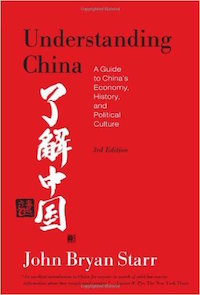 Understanding China: A Guide to China’s Economy, History, and Political Culture
Understanding China: A Guide to China’s Economy, History, and Political Culture
by John Bryan Starr
In this succinct, modest, and refreshingly forthright book–now revised and updated for the new century–Starr introduces to the uninitiated reader the background, basic data, and issues at stake in China’s crisis-ridden present and future.
After ten years, John Bryan Starr has thoroughly revised and updated his classic introduction to the background of, the data about, and the issues at stake in China’s present and future. In the new edition, Starr seamlessly weaves in additional material on the 2008 Olympics in Beijing, the Chinese government’s ongoing efforts to curb the influence of the Internet, and the intensifying trade disputes between the United States and China.
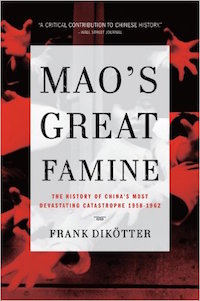 Mao’s Great Famine: The History of China’s Most Devastating Catastrophe, 1958-1962
Mao’s Great Famine: The History of China’s Most Devastating Catastrophe, 1958-1962
by Frank Dikötter
“Between 1958 and 1962, China descended into hell. Mao Zedong threw his country into a frenzy with the Great Leap Forward, an attempt to catch up to and overtake Britain in less than 15 years The experiment ended in the greatest catastrophe the country had ever known, destroying tens of millions of lives.”
So opens Frank Dikötter’s riveting, magnificently detailed chronicle of an era in Chinese history much speculated about but never before fully documented because access to Communist Party archives has long been restricted to all but the most trusted historians. A new archive law has opened up thousands of central and provincial documents that “fundamentally change the way one can study the Maoist era.” Dikötter makes clear, as nobody has before, that far from being the program that would lift the country among the world’s superpowers and prove the power of Communism, as Mao imagined, the Great Leap Forward transformed the country in the other direction. It became the site not only of “one of the most deadly mass killings of human history,”–at least 45 million people were worked, starved, or beaten to death–but also of “the greatest demolition of real estate in human history,” as up to one-third of all housing was turned into rubble).
The experiment was a catastrophe for the natural world as well, as the land was savaged in the maniacal pursuit of steel and other industrial accomplishments. In a powerful mesghing of exhaustive research in Chinese archives and narrative drive, Dikötter for the first time links up what happened in the corridors of power-the vicious backstabbing and bullying tactics that took place among party leaders-with the everyday experiences of ordinary people, giving voice to the dead and disenfranchised. His magisterial account recasts the history of the People’s Republic of China.
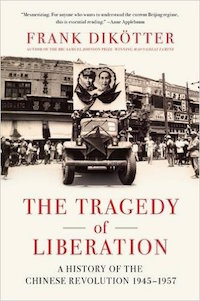 The Tragedy of Liberation: A History of the Chinese Revolution 1945-1957
The Tragedy of Liberation: A History of the Chinese Revolution 1945-1957
by Frank Dikötter
“The Chinese Communist party refers to its victory in 1949 as a ‘liberation.’ In China the story of liberation and the revolution that followed is not one of peace, liberty, and justice. It is first and foremost a story of calculated terror and systematic violence.” So begins Frank Dikötter’s stunning and revelatory chronicle of Mao Zedong’s ascension and campaign to transform the Chinese into what the party called New People. Due to the secrecy surrounding the country’s records, little has been known before now about the eight years that followed, preceding the massive famine and Great Leap Forward.
Drawing on hundreds of previously classified documents, secret police reports, unexpurgated versions of leadership speeches, eyewitness accounts of those who survived, and more, and told with great narrative sweep, The Tragedy of Liberation bears witness to a shocking, largely untold history, giving voice at last to the millions who were lost and casting new light on the foundations of one of the most powerful regimes of the twenty-first century.
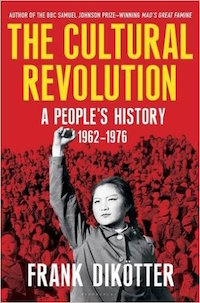 The Cultural Revolution: A People’s History, 1962?1976
The Cultural Revolution: A People’s History, 1962?1976
by Frank Dikötter
After the economic disaster of the Great Leap Forward that claimed tens of millions of lives from 1958–1962, an aging Mao Zedong launched an ambitious scheme to shore up his reputation and eliminate those he viewed as a threat to his legacy. The stated goal of the Cultural Revolution was to purge the country of bourgeois, capitalistic elements he claimed were threatening genuine communist ideology. Young students formed the Red Guards, vowing to defend the Chairman to the death, but soon rival factions started fighting each other in the streets with semiautomatic weapons in the name of revolutionary purity. As the country descended into chaos, the military intervened, turning China into a garrison state marked by bloody purges that crushed as many as one in fifty people.
The Cultural Revolution: A People’s History, 1962–1976 draws for the first time on hundreds of previously classified party documents, from secret police reports to unexpurgated versions of leadership speeches. Frank Dikötter uses this wealth of material to undermine the picture of complete conformity that is often supposed to have characterized the last years of the Mao era. After the army itself fell victim to the Cultural Revolution, ordinary people used the political chaos to resurrect the market and hollow out the party’s ideology. In short, they buried Maoism. By showing how economic reform from below was an unintended consequence of a decade of violent purges and entrenched fear, The Cultural Revolution casts China’s most tumultuous era in a wholly new light.
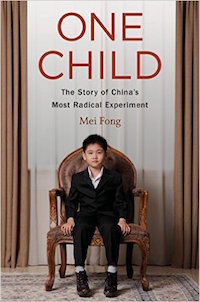 One Child: The Story of China’s Most Radical Experiment
One Child: The Story of China’s Most Radical Experiment
by Mei Fong
When Communist Party leaders adopted the one-child policy in 1980, they hoped curbing birth-rates would help lift China’s poorest and increase the country’s global stature. But at what cost? Now, as China closes the book on the policy after more than three decades, it faces a population grown too old and too male, with a vastly diminished supply of young workers.
Mei Fong has spent years documenting the policy’s repercussions on every sector of Chinese society. In One Child, she explores its true human impact, traveling across China to meet the people who live with its consequences. Their stories reveal a dystopian reality: unauthorized second children ignored by the state, only-children supporting aging parents and grandparents on their own, villages teeming with ineligible bachelors, and an ungoverned adoption market stretching across the globe. Fong tackles questions that have major implications for China’s future: whether its “Little Emperor” cohort will make for an entitled or risk-averse generation; how China will manage to support itself when one in every four people is over sixty-five years old; and above all, how much the one-child policy may end up hindering China’s growth.
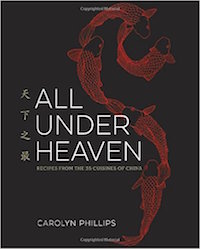 All Under Heaven: Recipes from the 35 Cuisines of China
All Under Heaven: Recipes from the 35 Cuisines of China
by Carolyn Phillips
Vaulting from ancient taverns near the Yangtze River to banquet halls in modern Taipei, All Under Heaven is the first cookbook in English to examine all 35 cuisines of China. Drawing on centuries’ worth of culinary texts, as well as her own years working, eating, and cooking in Taiwan, Carolyn Phillips has written a spirited, symphonic love letter to the flavors and textures of Chinese cuisine. With hundreds of recipes–from simple Fried Green Onion Noodles to Lotus-Wrapped Spicy Rice Crumb Pork–written with clear, step-by-step instructions, All Under Heaven serves as both a handbook for the novice and a source of inspiration for the veteran chef.
— Los Angeles Times: Favorite Cookbooks of 2016
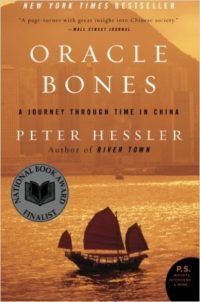 Oracle Bones: A Journey Through Time in China
Oracle Bones: A Journey Through Time in China
by Peter Hessler
A century ago, outsiders saw China as a place where nothing ever changes. Today the country has become one of the most dynamic regions on earth. In Oracle Bones, Peter Hessler explores the human side of China’s transformation, viewing modern-day China and its growing links to the Western world through the lives of a handful of ordinary people. In a narrative that gracefully moves between the ancient and the present, the East and the West, Hessler captures the soul of a country that is undergoing a momentous change before our eyes.
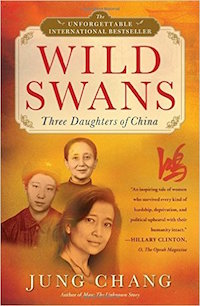 Wild Swans: Three Daughters of China
Wild Swans: Three Daughters of China
by Jung Chang
The story of three generations in twentieth-century China that blends the intimacy of memoir and the panoramic sweep of eyewitness history—a bestselling classic in thirty languages with more than ten million copies sold around the world, now with a new introduction from the author.
An engrossing record of Mao’s impact on China, an unusual window on the female experience in the modern world, and an inspiring tale of courage and love, Jung Chang describes the extraordinary lives and experiences of her family members: her grandmother, a warlord’s concubine; her mother’s struggles as a young idealistic Communist; and her parents’ experience as members of the Communist elite and their ordeal during the Cultural Revolution. Chang was a Red Guard briefly at the age of fourteen, then worked as a peasant, a “barefoot doctor,” a steelworker, and an electrician. As the story of each generation unfolds, Chang captures in gripping, moving—and ultimately uplifting—detail the cycles of violent drama visited on her own family and millions of others caught in the whirlwind of history.
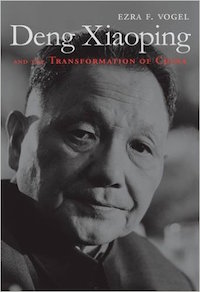 Deng Xiaoping and the Transformation of China
Deng Xiaoping and the Transformation of China
by Ezra F. Vogel
No one in the twentieth century had a greater impact on world history than Deng Xiaoping. And no scholar is better qualified than Ezra Vogel to disentangle the contradictions embodied in the life and legacy of China’s boldest strategist-the pragmatic, disciplined force behind China’s radical economic, technological, and social transformation.
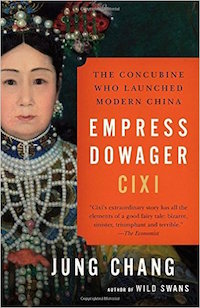 Empress Dowager Cixi: The Concubine Who Launched Modern China
Empress Dowager Cixi: The Concubine Who Launched Modern China
by Jung Chang
In 1852, at age sixteen, Cixi was chosen as one of Emperor Xianfeng’s numerous concubines. When he died in 1861, their five-year-old son succeeded to the throne. Cixi at once launched a coup against her son’s regents and placed herself as the true source of power—governing through a silk screen that separated her from her male officials.
Drawing on newly available sources, Jung Chang comprehensively overturns Cixi’s reputation as a conservative despot. Cixi’s extraordinary reign saw the birth of modern China. Under her, the ancient country attained industries, railways, electricity, and a military with up-to-date weaponry. She abolished foot-binding, inaugurated women’s liberation, and embarked on a path to introduce voting rights. Packed with drama, this groundbreaking biography powerfully reforms our view of a crucial period in China’s—and the world’s—history.
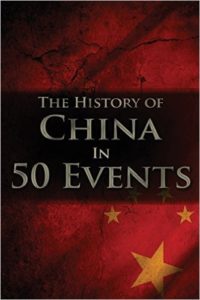 The History of China in 50 Events: (Opium Wars – Marco Polo – Sun Tzu – Confucius – Forbidden City – Terracotta Army – Boxer Rebellion)
The History of China in 50 Events: (Opium Wars – Marco Polo – Sun Tzu – Confucius – Forbidden City – Terracotta Army – Boxer Rebellion)
by Henry Freeman
As one of the oldest civilizations in the world, China has a vast, rich history. In order to assist with the study of Chinese history, this book has been broken down into a series of straightforward, easy-to-read vignettes.
Inside you will read about…
– The Great Flood – The Great Wall is begun – The Terra Cotta Army is created – Gunpowder is invented – Great Anti-Buddhist Persecution – Marco Polo travels to China – The Forbidden City is completed – First Opium War – SARS outbreak And much more! This book will provide in-depth insights into some of the most important events in Chinese history while providing an overall context within which these events took place. Designed as an introductory overview of Chinese history, this book is the perfect resource for those who are seeking to expand their knowledge of China and world history.
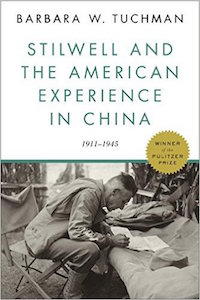 Stilwell and the American Experience in China: 1911-1945
Stilwell and the American Experience in China: 1911-1945
by Barbara W. Tuchman
Barbara W. Tuchman won her second Pulitzer Prize for this nonfiction masterpiece—an authoritative work of history that recounts the birth of modern China through the eyes of one extraordinary American.
General Joseph W. Stilwell was a man who loved China deeply and knew its people as few Americans ever have. Barbara W. Tuchman’s groundbreaking narrative follows Stilwell from the time he arrived in China during the Revolution of 1911, through his tours of duty in Peking and Tientsin in the 1920s and ’30s, to his return as theater commander in World War II, when the Nationalist government faced attack from both Japanese invaders and Communist insurgents. Peopled by warlords, ambassadors, and missionaries, this classic biography of the cantankerous but level-headed “Vinegar Joe” sparkles with Tuchman’s genius for animating the people who shaped history.
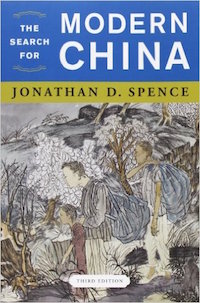 The Search for Modern China
The Search for Modern China
by Jonathan D. Spence
This text, the classic introduction to modern China for students and general readers, emerged from Spence’s highly successful introductory course at Yale, in which he traced the beginnings of modern China to internal developments beginning in the early 17th century. Strong on social and political history, as well as Chinese culture and its intersections with politics, this paperback is a longstanding leader in the survey course on modern China.
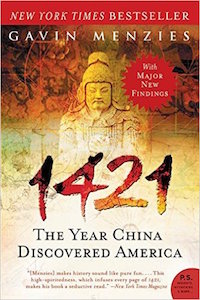 1421: The Year China Discovered America
1421: The Year China Discovered America
by Gavin Menzies
On March 8, 1421, the largest fleet the world had ever seen set sail from China to “proceed all the way to the ends of the earth to collect tribute from the barbarians beyond the seas.” When the fleet returned home in October 1423, the emperor had fallen, leaving China in political and economic chaos.
The great ships were left to rot at their moorings and the records of their journeys were destroyed. Lost in the long, self-imposed isolation that followed was the knowledge that Chinese ships had reached America seventy years before Columbus and had circumnavigated the globe a century before Magellan. And they colonized America before the Europeans, transplanting the principal economic crops that have since fed and clothed the world.
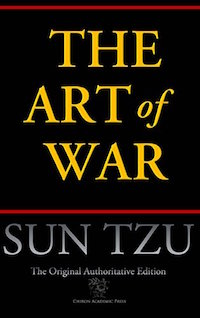 The Art of War
The Art of War
by Sun Tzu
THE ART OF WAR (Chinese: ????; pinyin: S?nz? b?ngf?) is an ancient Chinese military treatise attributed to Sun Tzu, a high-ranking military general, strategist and tactician, and kindred to the Realpolitik of his time, termed in China as Legalism. The text is composed of 13 chapters, each of which is devoted to one aspect of warfare. It is commonly thought of as a definitive work on military strategy and tactics. It has been the most famous and influential of China’s Seven Military Classics, and “for the last two thousand years it remained the most important military treatise in Asia, where even the common people knew it by name.” It has had an influence on Eastern and Western military thinking, business tactics, legal strategy and beyond.
Beyond its military and intelligence applications from earliest days to the present time, THE ART OF WAR has been applied to many fields well outside of the military. Much of the text is about how to fight wars without actually having to do battle: it gives tips on how to outsmart one’s opponent so that physical battle is not necessary. As such, it has found application as a training guide for many competitive endeavors that do not involve actual combat. There are business books applying its lessons to office politics and corporate strategy. Many companies make the book required reading for their key executives. The book is also popular among Western business management, who have turned to it for inspiration and advice on how to succeed in competitive business situations. It has also been applied to the field of education. The Art of War has been the subject of law books and legal articles on the trial process, including negotiation tactics and trial strategy.
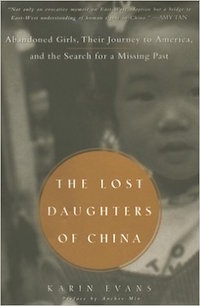 The Lost Daughters of China: Abandoned Girls, Their Journey to America, and Their Search for a Missing Past
The Lost Daughters of China: Abandoned Girls, Their Journey to America, and Their Search for a Missing Past
by Karin Evans
A personal and journalistic exploration of American and Chinese culture at a unique point of intersection: the thousands of baby girls who are abandoned in one country each year and adopted in the other.
Today Karin Evans is the mother of Kelly, a thriving Chinese-American toddler. But two years ago, her daughter was one of the hundreds of thousands of infant girls abandoned in orphanages all over China. The story of how Kelly came to be there is rooted deep in China’s history, in an ancient political, economic, and cultural preference for baby boys that began in the time of Confucius and was still going strong when China’s notorious one-child policy was introduced in the 1980s.
Through extensive research combined with the moving account of bringing Kelly home, Evans investigates the conditions that engendered generations of abandoned girls in China and a legacy of lost women. She provides insight into the historic place of sons and daughters in the Chinese family, the philosophical underpinnings of filial piety, as well as the selective abortions and other desperate acts undertaken by contemporary families convinced of the need for a son to perpetuate the family line. In this eloquent journalistic memoir, Evans compellingly links the lives of an abandoned Chinese baby girl, an adoptive American mother, and a Chinese mother hidden in the shadows.
“Not only an evocative memoir on East-West adoption but a bridge to East-West understanding of human rights in China.” –Amy Tan
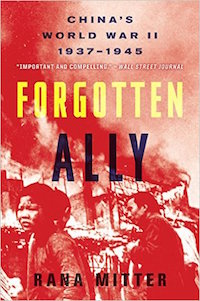 Forgotten Ally: China’s World War II, 1937-1945
Forgotten Ally: China’s World War II, 1937-1945
by Rana Mitter
In 1937, two years before Hitler invaded Poland, Chinese troops clashed with Japanese occupiers in the first battle of World War II. Joining with the United States, the Soviet Union, and Great Britain, China became the fourth great ally in a devastating struggle for its very survival.
Prizewinning historian Rana Mitter unfurls China’s drama of invasion, resistance, slaughter, and political intrigue as never before. Based on groundbreaking research, this gripping narrative focuses on a handful of unforgettable characters, including Chiang Kai-shek, Mao Zedong, and Chiang’s American chief of staff, “Vinegar Joe” Stilwell. Mitter also recounts the sacrifice and resilience of everyday Chinese people through the horrors of bombings, famines, and the infamous Rape of Nanking.
More than any other twentieth-century event, World War II was crucial in shaping China’s worldview, making Forgotten Ally both a definitive work of history and an indispensable guide to today’s China and its relationship with the West.
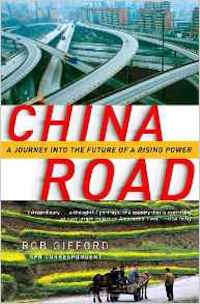 China Road: A Journey into the Future of a Rising Power
China Road: A Journey into the Future of a Rising Power
by Rob Gifford
Route 312 is the Chinese Route 66. It flows three thousand miles from east to west, passing through the factory towns of the coastal areas, through the rural heart of China, then up into the Gobi Desert, where it merges with the Old Silk Road. The highway witnesses every part of the social and economic revolution that is turning China upside down.
In this utterly surprising and deeply personal book, acclaimed National Public Radio reporter Rob Gifford, a fluent Mandarin speaker, takes the dramatic journey along Route 312 from its start in the boomtown of Shanghai to its end on the border with Kazakhstan. Gifford reveals the rich mosaic of modern Chinese life in all its contradictions, as he poses the crucial questions that all of us are asking about China: Will it really be the next global superpower? Is it as solid and as powerful as it looks from the outside? And who are the ordinary Chinese people, to whom the twenty-first century is supposed to belong?
Gifford is not alone on his journey. The largest migration in human history is taking place along highways such as Route 312, as tens of millions of people leave their homes in search of work. He sees signs of the booming urban economy everywhere, but he also uncovers many of the country’s frailties, and some of the deep-seated problems that could derail China’s rise.
The whole compelling adventure is told through the cast of colorful characters Gifford meets: garrulous talk-show hosts and ambitious yuppies, impoverished peasants and tragic prostitutes, cell-phone salesmen, AIDS patients, and Tibetan monks. He rides with members of a Shanghai jeep club, hitchhikes across the Gobi desert, and sings karaoke with migrant workers at truck stops along the way.
As he recounts his travels along Route 312, Rob Gifford gives a face to what has historically, for Westerners, been a faceless country and breathes life into a nation that is so often reduced to economic statistics. Finally, he sounds a warning that all is not well in the Chinese heartlands, that serious problems lie ahead, and that the future of the West has become inextricably linked with the fate of 1.3 billion Chinese people.
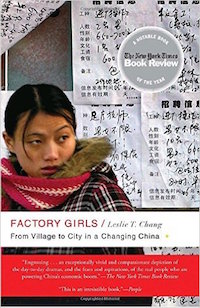 Factory Girls: From Village to City in a Changing China
Factory Girls: From Village to City in a Changing China
by Leslie T. Chang
An eye-opening and previously untold story, Factory Girls is the first look into the everyday lives of the migrant factory population in China.
China has 130 million migrant workers—the largest migration in human history. In Factory Girls, Leslie T. Chang, a former correspondent for the Wall Street Journal in Beijing, tells the story of these workers primarily through the lives of two young women, whom she follows over the course of three years as they attempt to rise from the assembly lines of Dongguan, an industrial city in China’s Pearl River Delta.
As she tracks their lives, Chang paints a never-before-seen picture of migrant life—a world where nearly everyone is under thirty; where you can lose your boyfriend and your friends with the loss of a mobile phone; where a few computer or English lessons can catapult you into a completely different social class. Chang takes us inside a sneaker factory so large that it has its own hospital, movie theater, and fire department; to posh karaoke bars that are fronts for prostitution; to makeshift English classes where students shave their heads in monklike devotion and sit day after day in front of machines watching English words flash by; and back to a farming village for the Chinese New Year, revealing the poverty and idleness of rural life that drive young girls to leave home in the first place. Throughout this riveting portrait, Chang also interweaves the story of her own family’s migrations, within China and to the West, providing historical and personal frames of reference for her investigation.
A book of global significance that provides new insight into China, Factory Girls demonstrates how the mass movement from rural villages to cities is remaking individual lives and transforming Chinese society, much as immigration to America’s shores remade our own country a century ago.
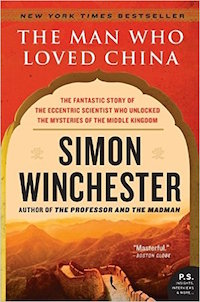 The Man Who Loved China: The Fantastic Story of the Eccentric Scientist Who Unlocked the Mysteries of the Middle Kingdom
The Man Who Loved China: The Fantastic Story of the Eccentric Scientist Who Unlocked the Mysteries of the Middle Kingdom
by Simon Winchester
In sumptuous and illuminating detail, Simon Winchester, bestselling author of The Professor and the Madman, brings to life the extraordinary story of Joseph Needham—the brilliant Cambridge scientist, freethinking intellectual, and practicing nudist who unlocked the most closely held secrets of China, once the world’s most technologically advanced country
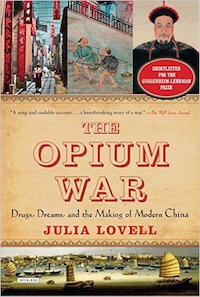 The Opium War: Drugs, Dreams, and the Making of Modern China
The Opium War: Drugs, Dreams, and the Making of Modern China
by Julia Lovell
An engaging, highly readable, character-driven account of the war that transformed China, and which continues to loom large over modern Chinese history.
In October 1839, a Windsor cabinet meeting votes to begin the first Opium War against China. Bureaucratic fumbling, military missteps, and a healthy dose of political opportunism and collaboration followed. Rich in tragicomedy, The Opium War explores the disastrous British foreign-relations move that became a founding myth of modern Chinese nationalism, and depicts China’s heroic struggle against Western conspiracy. Julia Lovell examines the causes and consequences of the Opium War, interweaving tales of the opium pushers and dissidents. More importantly, she analyses how the Opium Wars shaped China’s self-image and created an enduring model for its interactions with the West, plagued by delusion and prejudice.
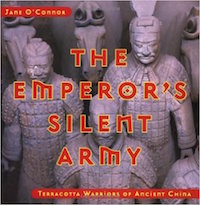 The Emperor’s Silent Army: Terracotta Warriors of Ancient China
The Emperor’s Silent Army: Terracotta Warriors of Ancient China
by Jane O’Connor
Lintong County, People’s Republic of China, March 1974
Three farmers are digging a well when suddenly their shovels hit something hard. It is a clay head of a mad who stares back at them, open-eyed and amazingly real looking. The farmers have never seen anything like it; neither have the archeologists who arrive and being to uncover more and more pottery men—first dozens, then hundreds and eventually thousands! Buried for more than 2,200 years, they are soldiers, life-size as well as life-like, and they stand at attention as if waiting for the command to charge into battle. The only thing missing is their weapons, and soon those are found too—thousands of real bronze swords, daggers, and arrowheads still so sharp they can split a hair.
Now, after almost thirty years of ongoing excavation, a buried army of 7,500 terracotta soldiers and horses has emerged. And this site that three farmers accidentally stumbled upon ranks along with the Great Pyramids in Egypt as one of the true wonders of the ancient world.
The Emperor’s Silent Army features more than forty full-color photos that showcase the terracotta troops. A vivid and engaging text tells all about the army as well as the extraordinary story of the men who commanded its creation—the ruthless and tyrannical first emperor of China.
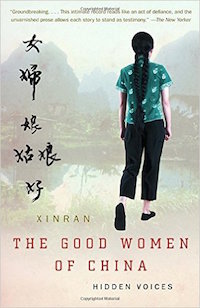 The Good Women of China: Hidden Voices
The Good Women of China: Hidden Voices
by Xinran
When Deng Xiaoping’s efforts to “open up” China took root in the late 1980s, Xinran recognized an invaluable opportunity. As an employee for the state radio system, she had long wanted to help improve the lives of Chinese women. But when she was given clearance to host a radio call-in show, she barely anticipated the enthusiasm it would quickly generate. Operating within the constraints imposed by government censors, “Words on the Night Breeze” sparked a tremendous outpouring, and the hours of tape on her answering machines were soon filled every night.
Whether angry or muted, posing questions or simply relating experiences, these anonymous women bore witness to decades of civil strife, and of halting attempts at self-understanding in a painfully restrictive society. In this collection, by turns heartrending and inspiring, Xinran brings us the stories that affected her most, and offers a graphically detailed, altogether unprecedented work of oral history.
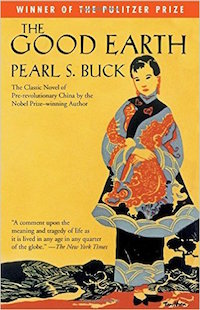 The Good Earth
The Good Earth
by Pearl S. Buck
Nobel Laureate Pearl S. Buck’s epic Pulitzer Prize-winning novel and Oprah Book Club selection about a vanished China and one family’s shifting fortunes.
Though more than seventy years have passed since this remarkable novel won the Pulitzer Prize, it has retained its popularity and become one of the great modern classics. In The Good Earth Pearl S. Buck paints an indelible portrait of China in the 1920s, when the last emperor reigned and the vast political and social upheavals of the twentieth century were but distant rumblings. This moving, classic story of the honest farmer Wang Lung and his selfless wife O-Lan is must reading for those who would fully appreciate the sweeping changes that have occurred in the lives of the Chinese people during the last century.
Nobel Prize winner Pearl S. Buck traces the whole cycle of life: its terrors, its passions, its ambitions and rewards. Her brilliant novel—beloved by millions of readers—is a universal tale of an ordinary family caught in the tide of history.
Kids Book Recommendations
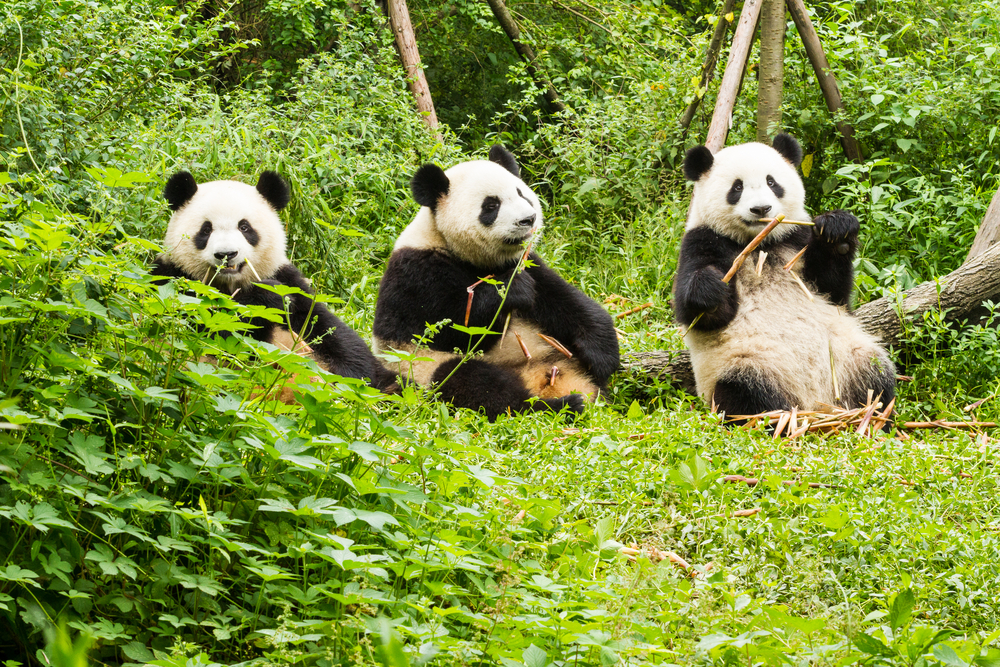
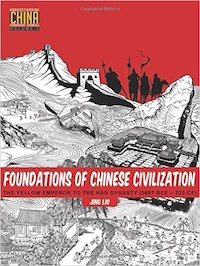 Foundations of Chinese Civilization: The Yellow Emperor to the Han Dynasty (2697 BCE – 220 CE)
Foundations of Chinese Civilization: The Yellow Emperor to the Han Dynasty (2697 BCE – 220 CE)
by Jing Liu
Who founded China? Are Chinese people religious? What is Chinese culture and how has it changed over time? The accessible and fun Understanding China Through Comics series answers those questions and more.
For all ages, Foundations of Chinese Civilization covers China’s early history in comic form, introducing philosophies like Confucianism and Daoism, the story of the Silk Road, famous emperors like Han Wudi, and the process of China’s unification.
Includes a handy timeline. This is volume one of the Understanding China Through Comics series.
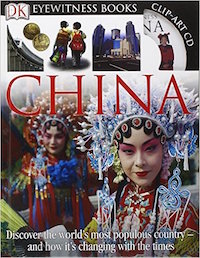 China (DK Eyewitness Books)
China (DK Eyewitness Books)
by Poppy Sebag-Montefiore
“Eye-popping…It’s a text, but also a trip educators, students and parents can enjoy taking together.” — Minnesota Educator magazine
“The [Eyewitness] books are breathtaking…You’ll have so much fun poring over them that you’ll hardly know you’re learning.” — Milwaukee Journal-Sentinel
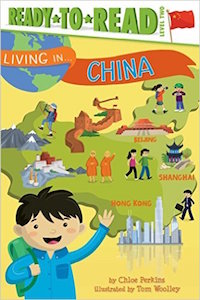 Living in . . . China
Living in . . . China
by Chloe Perkins & Tom Woolley
Discover what it’s like to grow up in China with this fascinating, nonfiction Level 2 Ready-to-Read, part of a new series all about kids just like you in countries around the world!
N? Hao! My name is Jin, and I’m a kid just like you living in China. China is a country filled with ancient wonders, high-tech cities, and lots of people—more than any other country on Earth! Have you ever wondered what China is like? Come along with me to find out!
Each book in our new Living in… series is narrated by a kid growing up in their home country and is filled with fresh, modern illustrations as well as loads of history, geography, and cultural goodies that fit perfectly into Common Core standards. Join kids from all over the world on a globe-trotting adventure with the Living in… series—sure to be a hit with children, parents, educators, and librarians alike!
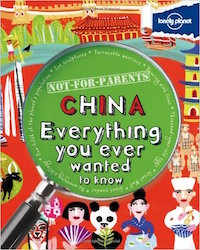 Not For Parents China: Everything You Ever Wanted to Know
Not For Parents China: Everything You Ever Wanted to Know
by Lonely Planet
This is not a guidebook. And it is definitely ‘not-for-parents.’
It is the real, inside story about one of the world’s most exciting countries – China. In this book you’ll hear fascinating tales about ancient empires, martial arts, the discovery of gunpowder and the first cup of tea. Check out cool stories about ice sculptures, dust storms, bloodthirsty warriors and dragons. You’ll find acrobats, fighting crickets, futuristic buildings and some seriously weird snacks.
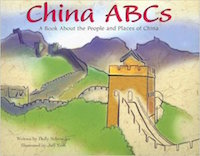 China ABCs: A Book About the People and Places of China
China ABCs: A Book About the People and Places of China
by Holly Schroeder
An alphabetical exploration of the people, geography, animals, plants, history, and culture of China
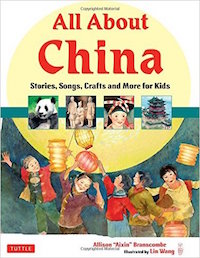 All About China: Stories, Songs, Crafts and More for Kids
All About China: Stories, Songs, Crafts and More for Kids
by Allison Branscombe
Take the whole family on a whirlwind tour of Chinese history and culture with this delightfully illustrated book that is packed with stories, activities and games. Travel from the stone age through the dynasties to the present day with songs and crafts for kids that will teach them about Chinese language and the Chinese way of life.
All About China is the next best thing to being there!
China is the world’s largest and most populated country boasting thousands of years of history, tradition and culture. In All About China, you’ll:
Discover the fantastic Chinese tales about the creation of the earth and the origin of the Moon Goddess
Delve into China’s multifaceted cultural heritage, visit breathtaking places and learn Chinese folk songs
Take a crack at solving a tangram shape puzzle
Learn about the twelve Chinese zodiac animals
Try your hand at making a traditional brush painting of a panda, bamboo and other subjects
All About China is an exciting and captivating introduction to the country, featuring page after page of colorful illustrations, interesting stories, amazing facts, cultural insights, engaging activities and much more. Young readers will embark on a fascinating journey through the many faces of this country, meeting its people and examining its landscape, culture and historical tapestry.
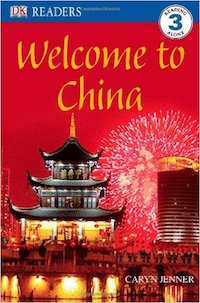 Welcome to China
Welcome to China
by Caryn Jenner
China is an incredible country. Find out all about its history, its culture and its exciting future.” — Back cover.
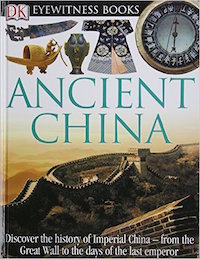 DK Eyewitness Books: Ancient China
DK Eyewitness Books: Ancient China
by Arthur Cotterell
Here is a spectacular and informative guide to the history of the great Chinese empire and the customs and traditions of its people. Stunning real-life photographs and lifelike models offer a unique “eyewitness” view of life in imperial China, from its earliest beginnings in the Bronze Age to its final days in the early years of the 20th century.
See the stunning bronze work of the ancient Chinese, an early irrigation machine, a set of antique acupuncture needles, the beautiful implements used for Chinese calligraphy. Learn why the First Emperor created the terra-cotta army, what kinds of goods were carried along the Silk Route, who invented paper, how a Chinese house was constructed, why tombs were filled with pottery figures, and what a civil servant’s job entailed. Discover why emperors were known as Sons of Heaven, what kinds of weapons were used in early battles, why families worshiped their ancestors, how fishermen used bivas to catch fish, and much, much more.
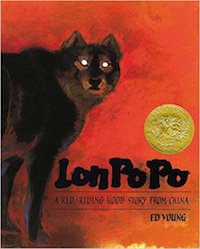 Lon Po Po: A Red-Riding Hood Story from China
Lon Po Po: A Red-Riding Hood Story from China
by Ed Young
Three little girls spare no mercy to Lon Po Po, the granny wolf, in this version of Little Red Riding Hood where they tempt her up a tree and over a limb, to her death. The girls’ frightened eyes are juxtaposed against Lon Po Po’s menacing squint and whirling blue costume in one of the books numerous three-picture sequences, which resemble the decorative panels of Chinese tradition.
Through mixing abstract and realistic images with complex use of color and shadow, artist and translator Young has transformed a simple fairy tail into a remarkable work of art and earned the 1990 Caldecott Medal in doing so.
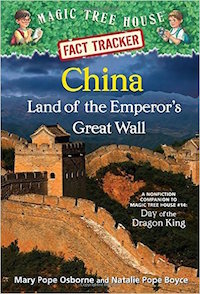 China: Land of the Emperor’s Great Wall: A Nonfiction Companion to Magic Tree House #14: Day of the Dragon King
China: Land of the Emperor’s Great Wall: A Nonfiction Companion to Magic Tree House #14: Day of the Dragon King
by Mary Pope Osborne
When Jack and Annie came back from their adventure in Magic Tree House® #14: Day of the Dragon King, they had lots of questions. Who was the Dragon King? How did he build the Great Wall? What is Chinese New Year? What are some other Chinese traditions? Find out the answers to these questions and more as Jack and Annie track the facts about Chinese history and culture.
Filled with up-to-date information, photographs, illustrations, and fun tidbits from Jack and Annie, the Magic Tree House Fact Trackers are the perfect way for kids to find out more about the topics they discover in their favorite Magic Tree House adventures. And teachers can use Fact Trackers alongside their Magic Tree House fiction companions to meet common core text pairing needs.
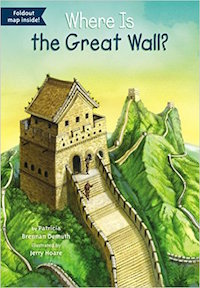 Where Is the Great Wall?
Where Is the Great Wall?
by Patricia Brennan Demuth
More than two thousand years ago, with his land under constant attack from nomads, the First Emperor of China came up with a simple solution: build a wall to keep out enemies. It was a wall that kept growing and growing. But its construction came at a huge cost: it is believed that more than a million Chinese died building it, earning the wall its nickname–the longest cemetery on earth. Through the story of the wall, Patricia Brennan Demuth is able to tell the story of China itself, the rise and fall of dynasties, the greatness of its culture, and its present-day status as a Communist world power.
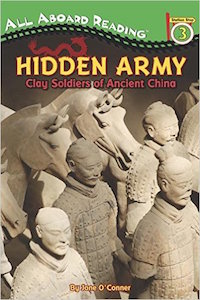 Hidden Army: Clay Soldiers of Ancient China
Hidden Army: Clay Soldiers of Ancient China
by Jane O’Connor
For more than two thousand years, a secret army of life-size terra-cotta soldiers lay buried underground in China. But in 1974, some farmers digging a well discovered the first of what turned out to be an army of more than 7,000. Who made them? And why? In this fascinating reader, kids will learn all about one of the wonders of the ancient world and the fierce first emperor of China.
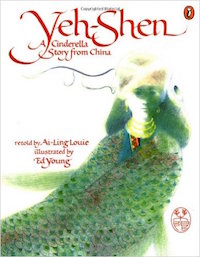 Yeh-Shen: A Cinderella Story from China
Yeh-Shen: A Cinderella Story from China
by Ai-Ling Louie
In almost every culture, parents tell children a story that resembles the European Cinderella. Scholars have collected more than 500 versions of the story. In the past couple of decades a lot of these multicultural variations on Cinderella have been turned into children’s picture books. The familiar story gives kids a great introduction to people of the world. Several of these books are very good, but two are exceptional. One is John Steptoe’s “Mufaro’s Beautiful Daughters,” an African version of the story. The other is this one.
“Yeh-Shen,” a Chinese version of the tale almost a thousand years older than the earliest known European version, contains many familiar details – a poor over-worked girl, a wicked stepmother and stepsister, a magical helper, a king in search of a wife, and a lost shoe. But while Cinderella is simply handed gifts from her fairy godmother, Yeh-Shen earns her wishes through kindness to a magic fish. This one change makes a big difference in the ethical tone of the book. It also makes the reader feel much more sympathetic toward Yeh-Shen, who seems to deserve every bit of good fortune she gets.
The illustrations greatly add to the book’s charm. Ed Young’s style is striking and unique. There’s a misty, ethereal quality to his art that makes everything look as if it were taking place in a dream – which is just perfect for the book. — Slomamma
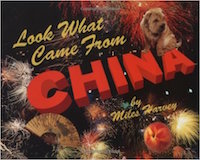 Look What Came From China!
Look What Came From China!
by Miles Harvey
Each book in this elementary-level multicultural series explores, in a very simple fashion, the foods, words, inventions, toys, games and sports, religions, music, and crafts that a specific country has contributed to the world.
Film Recommendations
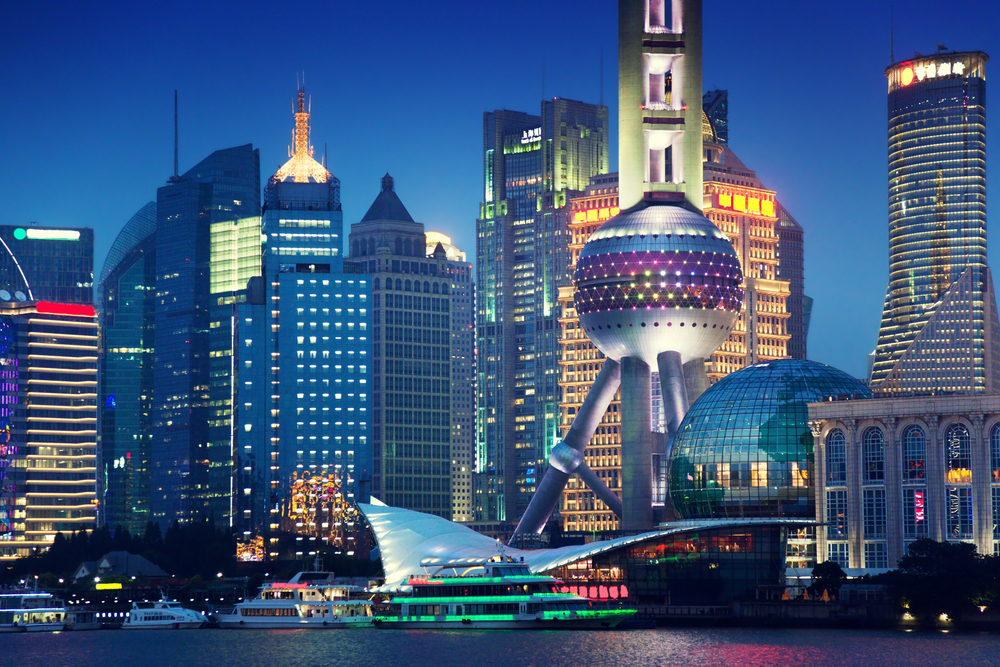
Made in China – Factory of the World – Documentary
Where does all the stuff you buy at Wall mart/Carrefour/Giant supermarket come from?
Right here in China’s “Factory City”
National Geographic – The Great Wall of China – Documentary
The Great Wall of China is a series of fortifications made of stone, brick, tamped earth, wood, and other materials, generally built along an east-to-west line across the historical northern borders of China to protect the Chinese states and empires against the raids and invasions of the various nomadic groups of the Eurasian Steppe. [Documentary] .Several walls were being built as early as the 7th century bce; these, later joined together and made bigger and stronger, are now collectively referred to as the Great Wall. Especially famous is the wall built 220–206 bce by Qin Shi Huang, the first Emperor of China. Little of that wall remains. Since then, the Great Wall has on and off been rebuilt, maintained, and enhanced; the majority of the existing wall is from the Ming Dynasty.
Using: China’s Drugs Epidemic
From the heart of China’s drug epidemic comes Using, the story of a journalist and an addict, who despite all odds, develop a relationship of mutual dependency. Few docs have come so close to the bone.
Ancient China – Dynasties of Power
The Last Emperor of China
The Devastating Effects of Pollution in China (Part 1/2)
We went to the single most polluted place on earth, the coal-mining town of Linfen in Shanxi Province, China, where kids play in dirty rivers and the sun sets early behind a thick curtain of smog.
The Devastating Effects of Pollution in China (Part 2/2)
We went to the single most polluted place on earth, the coal-mining town of Linfen, China. In part 2, we check out illegal coal mines and find out what what makes China the world’s leading polluter.
Megastructures – China’s Ultimate Port Documentary
Yangshan Port, formally the Yangshan Deep-Water Port, is a deep water port for container ships in Hangzhou Bay south of Shanghai. Connected to Shanghai’s Pudong New Area by the Donghai Bridge and forming part of the Port of Shanghai, the islands of Greater and Lesser Yangshan are administered separately as part of Zhejiang’s Shengsi County.
Built to allow the Port of Shanghai to grow despite shallow waters near the shore, it allows berths with depths of up to 15 metres (49 ft) to be built, and can handle today’s largest container ships. The port is built on the islands of Greater and Lesser Yangshan, part of the Zhoushan archipelago, with fill from land reclamation.
It is connected to the mainland via the 32.5 km (20.2 mi) Donghai Bridge, opened on 1 December 2005 as the world’s longest sea bridge. The six-lane highway bridge took 6,000 workers two and half years to construct.
China’s Mega Dam 2006 Discovery Channel
Organ Harvesting in China – Between Life and Death
Award winning documentary by NTD Television about shocking, state-sponsored practice of organ harvesting in China.
It’s hard to imagine that a regime more brutal and evil than the one in Nazi Germany could exist today.
Since assuming power in 1949, the Chinese Communist Party is responsible for the deaths of 70-80 million Chinese (more than the death toll of the two World Wars combined).
Now this most horrific regime in the history of mankind is butchering its people like pigs for their organs.
Lured by the promise of financial and economical gains government and politicians around the world, big corporations and corrupt individuals, are willing to turn a blind eye to the gruesome reality and human tragedy in China.
Gay and Married in China
Nominated for an One World Media award, this film presents the situation facing young homosexuals in China. From being humiliated in public to fighting for equal rights, the homosexual community in China is living in a much more tolerant environment. However, the conservative values toward marriage and continuing family blood make same-sex marriage far from reality. So what are the options for the young homosexuals in China? This documentary shows the stories of the four major characters, presenting the potential situation that might face homosexuals in China. This is an university project filmed and produced by Natalia(Qiong) Zuo for educational purposes. It’s not for broadcast or commercial use.
HUMAN TRAFFIC: CHINA
The Chinese version of the documentary, entitled “Human Traffic: China”, is hosted by Chinese pop artist Han Geng and tells the stories of real people affected by the human trafficking trade in China and the region: Xiaoxiang a young Chinese boy abducted for illegal adoption domestically; Kyi Kyi, a woman from the Irrawaddy delta in Myanmar, trafficked to China for forced marriage; and Thien, a young girl from the northern Vietnam trafficked to China as a forced sex worker.
The Land Where Women Rule: Inside China’s Last Matriarchy
China’s one-child policy led to millions of female infanticides—except in a lush valley known as the “Land Where Women Rule.” Located in the foothills of the Himalayas, Lugu Lake is home to China’s Mosuo matriarchy. The region’s 40,000 denizens have come up with a unique own family structure that puts women in charge. The Mosuo’s “walking marriages”—in which women can have as many boyfriends as they want throughout their lifetime—replace traditional monogamy and inheritance passes from mother to daughter.
But are the women really in control—and how are men fairing under their rule? Broadly correspondent Milène Larsson spends a week in Lugu Lake with three generations of Mosuo women to find out what life is like in one of the world’s last matriarchies.
China: Women of the Country
Chairman Mao Declassified History Channel
Life of Giant Pandas
Article Recommendations
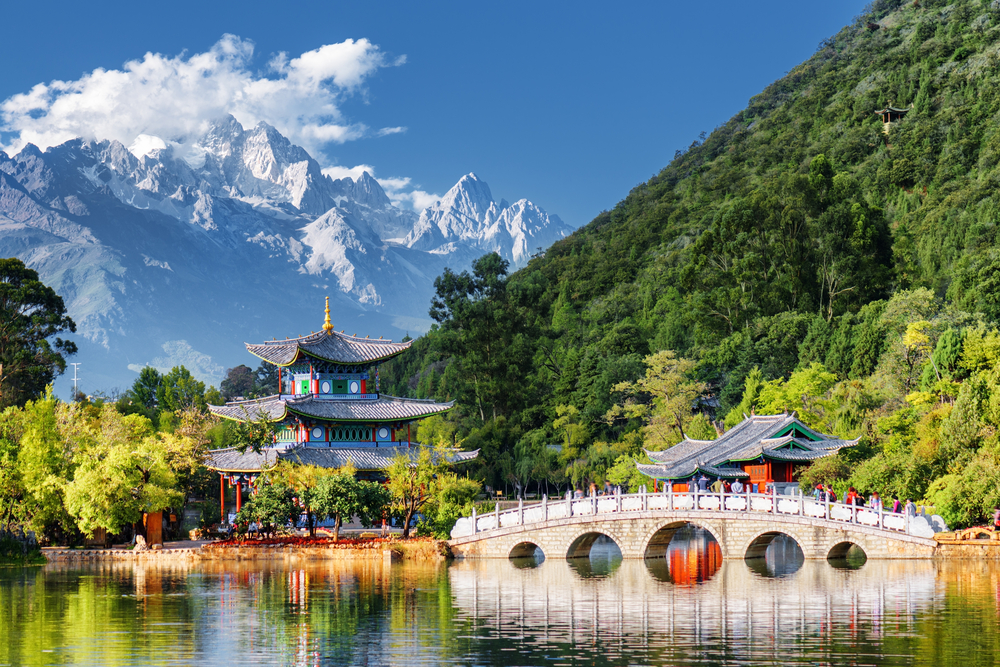
China: The Vanguard of Globalisation – Al Jazeera
The Great Fall of China – The Economist
China ‘Blocks’ Mongolia Border After Dalai Lama Visit – Al Jazeera
Not Enough Women in China? Let Men Share a Wife, an Economist Suggests – NY Times
The Rat Tribe of Beijing – Al Jazeera
China Economy Grows at Slowest Pace in 25 years, Latest GDP Figures Show – The Guardian
Muslims in China and their Relations with the State – Al Jazeera
Washington Post: Redefining China’s Family – The Washington Post
How China Built ‘iPhone City’ With Billions in Perks for Apple’s Partner – NY Times
China to End Decades-Old One-Child Policy, Bowing to Demographic Strain – Al Jazeera
China Announces Ban on Ivory Trade by End of 2017 – BBC
China Just Opened the Highest Bridge in the World at Over 1,800 Feet Above the Ground – Business Insider
The Best Inventions from China – Business Insider
China’s Debt Bubble is Getting Only More Dangerous – Washington Post
China Pushes its Panchen Lama on Reluctant Tibet – The Star
China Restricts Cars, Factories Amid 5-Day Smog Red Alert – CBC
Tibet, Taiwan and China – A Complex Nexus – The Diplomat
‘One Country, Two Systems’: How Hong Kong Remains Distinct from China – CNN
Project Options:
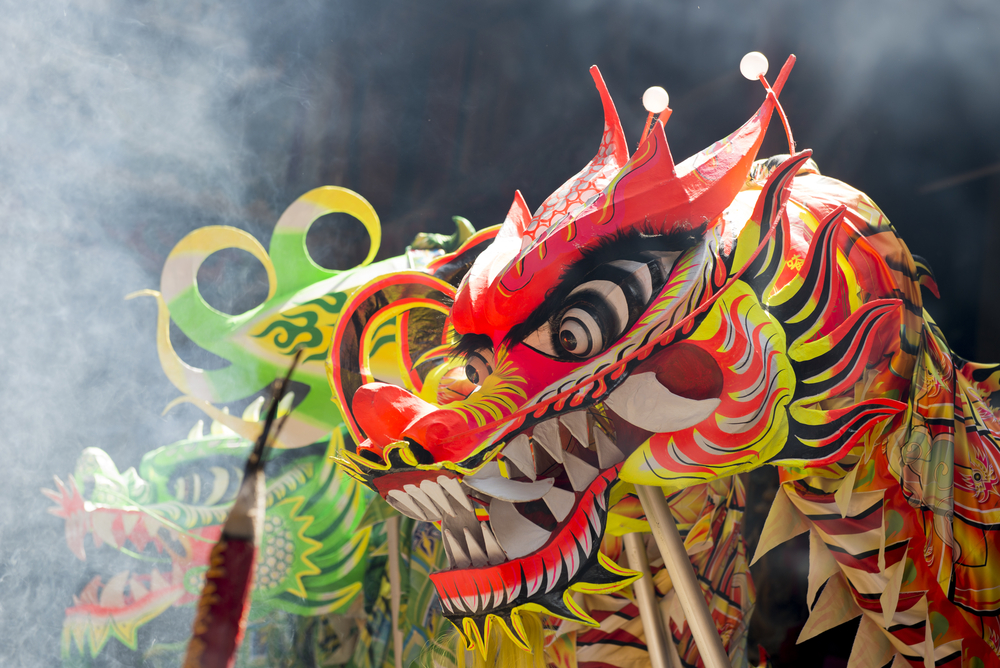
History
China has a longer recorded history than just about any country on the planet. Take the time to dive deep into one particular aspect that interests you, or create a timeline type overview by picking an event or two from each significant era.
- Pre-history of China: How was it settled and what was life like in the Neolithic and Bronze Ages?
- Pick a dynasty… and study the leaders, the history & the cultural aspects. What was unique and significant about this particular era?
- Emperors of China: Create a timeline of the Emperors of China and make note of one or two significant facts or accomplishments of each.
- The Last Emperor of China: Who was he? How did his reign end? What is he known for?
- What is the difference between the Republic of China and the People’s Republic of China? How did one lead into the other?
- Nationalist Era: What was it? When was it? Why does it matter?
- Communist Era: What was it? When was it? Why does it matter?
Communism in China
China is home to one of the longest running and most strongly held Communist governments. How did communism come to China? Who were the major players? What sort of governance existed before Communism? What are the particular features of Chinese communism that make it unique? How has the Communist government maintained power for this long? Does Communism work in China? What are the pros and cons? What is it like for the Chinese people to live under Communist rule. Based on your interactions in China, do you think most people are in favor of Communism?
Engineering in China
The Chinese have undertaken some of the most impressive engineering projects in the world, from deep in history to modern times. The Great Wall stands as a monument to early Chinese engineering. The enormous dams, ports, and cities that have been constructed in recent years are nothing short of amazing.
What are China’s greatest engineering feats? Pick one or two and examine the process, from inception to completion. What made these projects possible? Why do you think China undertakes such massive projects with a regularity that is not seen in other major constructions in other countries?
Industrial Revolution in China
China is currently undergoing an industrial revolution similar to what was seen in the Western world at the turn of the last century. Factories are springing up daily and the scale of some of these mega factories is mind boggling, more like a city than simply a work place.
Read Factory Girls. Talk with some Chinese who are involved in the production industry. Examine the economic and political factors that have influenced the boom in manufacturing in China. Why is this happening? What has been the impact on the Chinese and their way of life? On the environment? On the economy? On the country’s infrastructure and trajectory of development?
Education in China
The Chinese attitude toward and method of education is very different from the western philosophy. What does education look like for Chinese children, from early childhood through university? Is there a difference between urban and rural resources and the educational experience? Interview some Chinese students about their educational experience and their hopes for the future as a result.
Panda Conservation
The panda is an iconic Chinese animal. Native to China and very particular in habitat and diet, conservation projects have been underway for decades to bring the panda back from the brink of extinction. Several successful breeding programs have repopulated the dwindling numbers.
Why is the panda so special? Examine it’s evolutionary development, it’s habitat and it’s diet. Why did it fall into endangered status? What are the risk factors now for wild pandas? Where are wild pandas still living? Visit a panda conservation center and ask some questions. What can you learn about these majestic animals? What is being done to ensure their existence into the next generation? What are the success stories? Where are there still problems to overcome? What is the best way to support panda conservation?
Chinese Medicine
With a historical practice stretching back over 2500 years, Chinese medicine is still practice in China and is becoming more popular as an alternative treatment in the west. Most widely known as a combination of diet, exercise, acupuncture, massage therapies and herbal medicines, Chinese medicine is a complex practice rooted in manipulating the flow of Xi, or energy, through the body.
While you are in China, learn what you can about Chinese medicine. Talk to those who use it as well as a practitioner, if you can. Is there a difference between traditional Chinese Medicine and the standardized form that the government centralized in the 1950s? What are the Western criticisms of Chinese medicine? Why are people so polarized over it’s practice?
After your study, what is your opinion or experience of Chinese Medicine? What conclusions have you drawn? Explain.
Economic Expansion and Globalization
China has had the fastest growing economy on the planet for the past thirty , catapulting the country into the the seat of the largest economy in the world. As China has opened it’s doors and engaged in international trade Globalization has had its impacts.
What are the pros and cons of the rapid economic expansion of China? Which industries are most responsible for the growth? What has been the impact for the average Chinese worker? How has rapid economic expansion and globalization affected Chinese culture and the urban-rural experience? How has the Chinese government leveraged the expansion to their benefit? How is this rapid growth affecting the Communist ideals and experience of the country? What compromises have been made?
Some economists are predicting that China is on the brink of an economic stall or collapse. Why? What are the pros and cons of China’s rapid economic growth as you see them from your time in the country? Interview individuals and provide evidence.
Profiles of …..
Conduct a series of at least five interviews within a country. The point of the exercise would be to get a well rounded view of what it is like to live in the France from a variety of ages, incomes, employments and experiences. This could be conducted as video, or as text. Do an in depth analysis of the experience/information.
People you might profile:
- Farmers
- Teachers
- Restaurant owners/workers
- Religious figures
- Government officials
- Doctors or nurses
- Cafe owners
- Street vendors
- Children
- Parents
- Drivers
- Artists or musicians
- Laborers
- Cab drivers
- Long term expats
Problems & Solutions
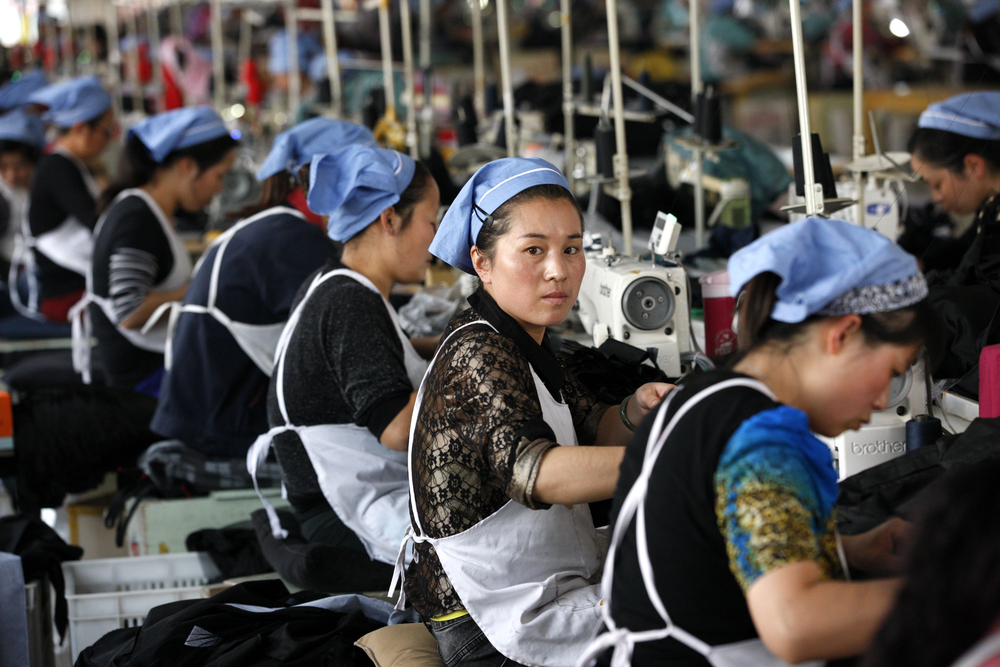
China & Tibet
The Chinese occupation of Tibet is a very touchy issue within China. Spend some time reading and studying the history on both sides of this divide. What was Tibet like before the Chinese invasion? Why does China believe it has a right to occupy Tibet? Who is the Dalai Lama and who is the Panchen Lama? What is the difference and why is there conflict and controversy around the acceptance of the Panchen Lama?
Visit Tibet, if possible (it requires special permits and a guided experience). How is Tibet different from China? How is it the same? What efforts are being made, both within Tibet and China and from without (the Dalai Lama live in India now) to restore the sovereignty of Tibet. Do you think this is a good idea? Or should Tibet remain one with China?
China’s One Child Policy
Since 1979 China has held to an infamous one child policy, in an attempt to control an exploding population. The policy penalized parents who had more than one child, tracked women’s fertility cycles through their work, and sometimes forced women to abort their pregnancies against their wills.
Among the unintended consequences of the one child policy are an aging population, the imminent reality that there will not be enough working aged people to support that aging population, and a shortage of women for Chinese men to marry, (gender selected abortions were common, boys were favored over girls). In addition, an enormous number of orphans, again, mainly girls, languish in state orphanages hoping to be adopted from abroad.
In 2015 the Chinese government began to loosen the one child policy.
What were the realities of the one child policy as it was implemented in China between 1979 and the present? What have been the effects on Chinese culture and family structure? How did the one child policy change economics? Parenting? Education? What happened if a family had twins? What changes have been implemented since 2015? Who may have more than one child? Are these reforms comprehensive or are they controlled? What are the consequences for families choosing to violate the one or two child structure? Interview people.
LGBTQ Issues in China
China is not progressive in their LGBTQ legislation or cultural sentiment. There are, however LGBTQ activists groups in the major cities now who are working towards rights expansion and equity. Do some research, or get to know some people in the LGBTQ community and learn more about the legal and cultural situation in China. What progress is being made? What are the major issues that remain? How are the members of the LGBTQ community working within (and against) the system to build lives together. (Hint: Watch the above video on LGBTQ and marriages of convenience.)
Women’s Rights & Feminism in China
How has Communism affected women’s rights in China? Where is there more equity than in the west? Where is there less? How has the one child policy affected women’s rights? What is the status of the feminist movement in China? What is the cultural norm in China for gender roles?
Religious Persecution in China
As a Communist country, the practice of most religions was outlawed. However there has long been a thriving underground church movement in China. How has the government tried to quash religious practice in the country? What are the consequences for people found illegally practicing or promoting religion, or smuggling Bibles? What has been the situation in Tibet with the persecution of the Buddhist monks there? How has the government tried to subdue the Tibetan religious practice or dilute it?
Have the government sanctions against religious practice been effective?
Pollution
With the rapid growth of the manufacturing industries and the massive expansion of infrastructure in China pollution has become one of the most significant problems the country faces, both in terms of the environment and healthcare.
Examine the causes and effects of pollution in China. Who are the biggest contributors? What is the government doing to try to stem the rampant pollution, particularly in cities? What is the attitude of the average Chinese person towards the pollution problem? How does it affect daily life in China?
How is China addressing the realities associated with global climate change? Are there any success stories? Where are there problems? What is being done (both in public and private initiatives) to address those?
Cultural Assignment Options
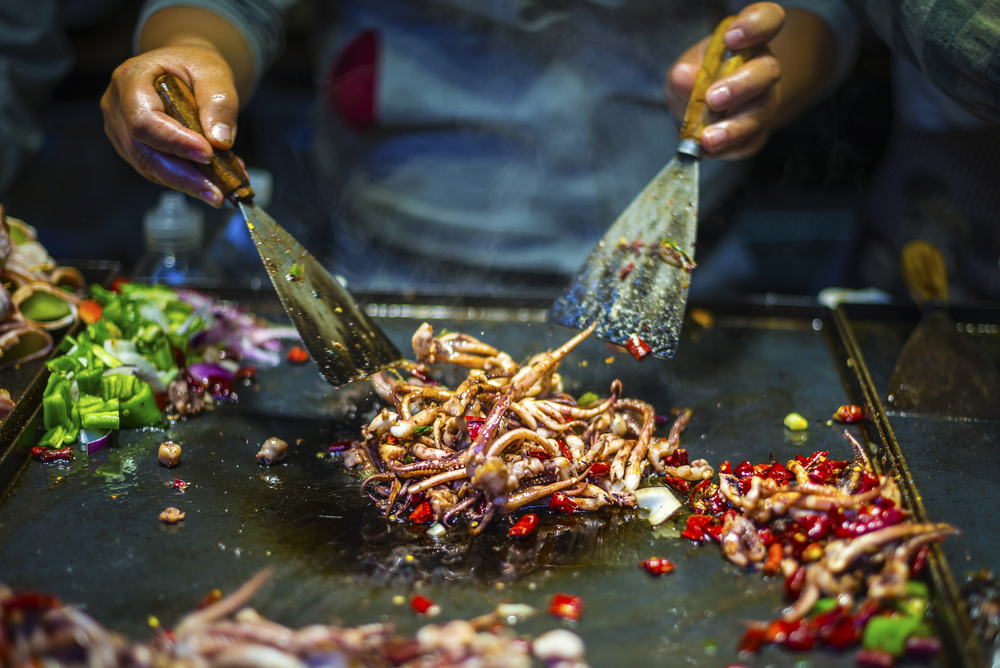
Food
China has a foodscape very different from that of the Western countries. In addition, the country is so vast that it’s impossible to lump Chinese food into one category. Be sure to eat bravely in China. If you can’t bring yourself to try everything, at least document it with photographs or video. As you travel, try the cuisines that are typical to each particular region. What do you love? What do you dislike? What is the weirdest thing you’ve tried? What is the worst? What’s the best?
Make a record (or a video!) of all of the new foods you’re trying as you travel through China.
Meaningful Connections
What is a meaningful interaction? You get to decide that. In general, it should be an interaction in which cultural exchange took place and you learned something. Often this will be with a local person; sometimes it will be with another traveler.
Sometimes these interactions look like very little on the outside but are totally life changing on the inside. Other times, they are rock your world amazing from every angle. It could be a meal shared, an afternoon’s excursion, a discussion that opens your eyes in some way, a self revelation that happened without any words exchanged at all.
Spend a day with a local individual or family. Document your experience in photos, interviews and the written word. The best way to interact with locals is to just start chatting with them at markets, on tours or on the street. You can also ask other travelers if they have met anyone who has offered some insight into life in the country. If you are a family who have children attending a local school then have a party, invite a parent to coffee, basically just open up your home to new relationships.
Take a Class
There are many options! Don’t be limited by this list:
- Cooking
- Language
- Art or Crafts
- Brush painting
- Rice paper art
- Tai Chi or another martial art
- Traditional Dance
- Music lessons
Museum Visits
China’s super cities have hundreds of museums. And then, of course, there are the numerous historical and archeological sites dotting the country as well. The following links contain lists of the museums in various major cities, but there are many, many more
- Beijing Museums
- Shanghai Museums
- Xian Museums
- Stunning Museums in China
- Museums in China by City
- China Online Museum
Save your ticket stubs!
Volunteer
Volunteering is a great way to get to know a local community and give back a bit to the places that you choose to travel. There are lots of ways to do this, both organized and arranged privately, as well as impromptu opportunities that will pop up.
If you’re looking for a list of volunteer opportunities in China, Transitions Abroad has a site dedicated to helping you find one. Please be advised that TAP is not recommending these, only presenting them as a list of possibilities. Vet your volunteer options carefully.
Live local
Get out of the hostel, rent a place in a local village, or do a homestay. Through websites like Airbnb it’s easy to find places to live locally. Consider a co-living space to develop community with like minded travelers while diving a little deeper and going a little bit more local. DSC Mansion in Shanghail, is one option.
Photo essay or a blog description of why living local was different than living in a hostel. How did this experience change the economics of your stay? What did you learn about the way locals live? What challenged you? What would you do differently next time?
Work Stay
Through an organization like WWOOF China, or HelpX, you can arrange for an opportunity to work in exchange for your room and board in a number of capacities, from farm labour to hospitality. Lots of students make use of these experiences to lower the cost of their travels, while at the same time learning valuable skills or “trying out” various career areas that interest them.
Request feedback in the form of a short evaluation that can be used later for a CV or reference
Public Transportation Project
Take as many types of public transportation as possible. China is famous for their amazing trains, from the high speed, to the magnetic levitating, to the highest altitude train in the world, to Tibet. Ride some! But also explore bicycle taxis, rickshaws, boats, and other local transportation
Challenge yourself to take every type of public transportation available while you are in Australia. Create a photo essay or videologue of your adventures. What did you learn?
Attend a Religious Observance
Buddhism, Confucianism and Taoism are the three predominant religious philosophies in China. While the Communist party in China is officially atheist, the constitution protects “freedom of religious belief.” What isn’t specifically protected is the practice of those beliefs. As a result, there has been a great deal of religious persecution in China since the Communist takeover. Find out which religions are protected and recognized by the Chinese government. Which are not? What forms has religious persecution taken in China over the years? What is the situation now? Take some time to attend various religious observances and see what you can learn. Don’t be afraid to ask questions. How does the religious climate in China compare with what you grew up with?
How to Create Your Own Course Work
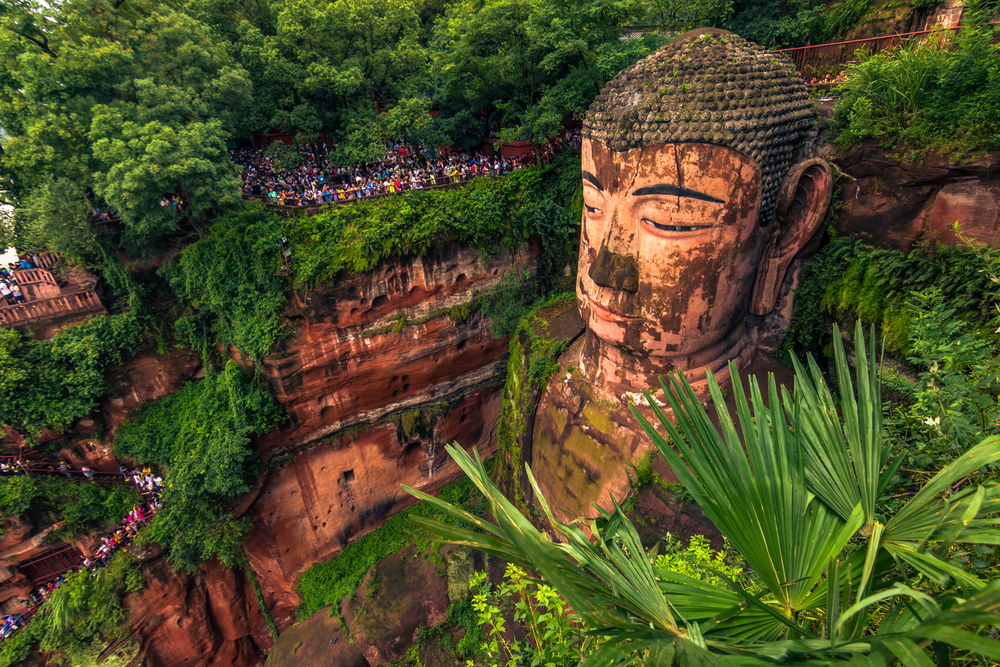
Ask
Learn to ask for what you want. If you meet someone interesting, ask them to teach you. Ask them for an interview. Ask to shadow them for a day or a week. You’ll be surprised at how eager people are to share what they know and teach when someone shows actual interest. Learn to ask questions. Learn to take social risks by putting yourself out there as a learner.
Plan
You have an idea or an interest. Something surprises you on your journey and all of a sudden you have a burning desire to know more. Plan your attack:
- Narrow your field of study to a particular question or topic.
- Compile resources: Look for teachers. Who knows what you need to know? Or who can you interview to learn more? Are there books or videos on the topic you’re interested in?
- Quantify it. How will you demonstrate what you have learned? A research paper, a video project, a photo essay, through art or music, a blog post, a published piece, an interview series, a mini documentary or do you have some other idea?
Produce
Produce a quality piece of academic work that reflects your experiential learning. The whole key to quantifying outside the box learning is to translate it into something that reflects the value of what you learned and how it contributed to your overall educational process.
Perhaps this will be as simple as a traditional research paper, depending on the depth and length of your study this could be as short as three pages or as long as a dissertation. Maybe you’ll produce a video for YouTube, or something grander, like a mini-documentary. Perhaps you’ll do something concrete instead, an art, or community action project and you’ll tell the story through a photo essay, or a series of blog posts. The possibilities are limited only by the resources you have at hand. Get creative. Think outside the box and truly experience your education.
Do You Have Anything to Add to This Resource Page?
We’re actively seeking to grow these resources in an open-source spirit. Please email jenn(at)bootsnall(dot)com with your edits or submissions of new information or materials.
Thank you!
